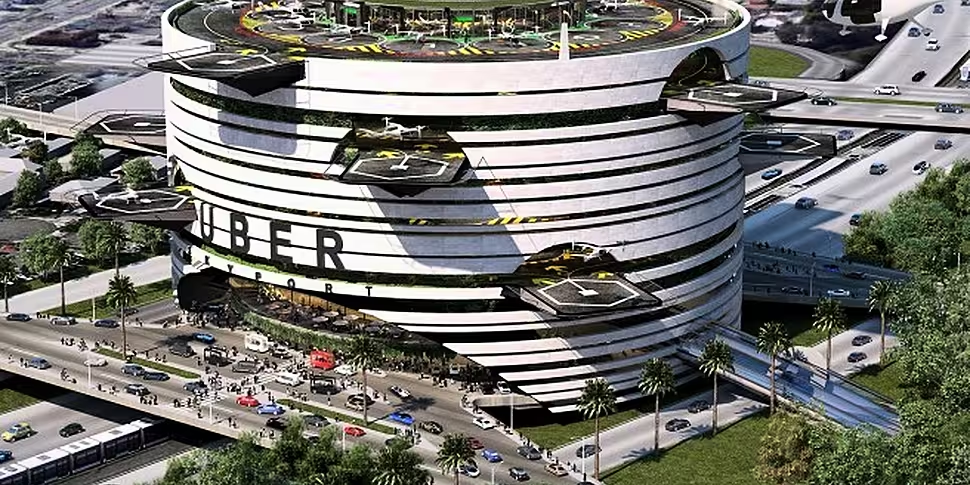US ride-sharing firm Uber is dead serious about its plans to launch a flying taxi service in the coming years.
The company debuted its latest flying car concept at its second annual 'Elevate' conference in Los Angeles this week - claiming it will slash commuting times and eventually prove cheaper than owning a car.
The aircraft is a mix between a plane and a helicopter and is designed for vertical takeoff and landing.

Boasting a total of five rotors, it will be electrically powered and will fly between 1,000 and 2,000 feet in the air.
The company expects it to be piloted by humans at first before eventually flying autonomously.
Uber aims to start testing aircraft designs by 2020 - with its first official ride due to take off in 2023.
How will the way you move around your city change in the next decade? With UberAIR, your futuristic fantasy might be a reality...and a breath of fresh air for urban mobility issues. Tune in to #Elevate18: https://t.co/D9GzazYhLl pic.twitter.com/nGDXUCHmyp
— Uber (@Uber) May 9, 2018
The company expects to see thousands of aircraft ferrying passengers between purpose-built 'skyports,' capable of handling around 200 take-offs and landings an hour.
Yesterday, the Elevate conference saw six architecture firms presenting their visions of how the skyports might look and operate - and they are a science fiction dream come true.
The design competition stipulated that the skyports needed to be capable of supporting over 4,000 passengers per hour with a three acre footprint - while also meeting noise and environmental regulations.

The Pickard Chilton/Arup "Sky tower" design is adaptable enough to allow for easy expansion vertically and horizontally to suit any city landscape.
The project aims to facilitate 1000 aircraft arrivals and departures every hour, with each vehicle capable of carrying up to five passengers.

The Boka Powell concept is also designed to accommodate 1,000 take-offs and landings every hour - carrying up to 4,000 passengers.
The structure is flexible to allow for wind change and includes turbine powered regeneration cells, “living” vegetated walls throughout and a photovoltaic-clad sun shade covering the building.

Humphreys & Partners 'beehive' design is directly inspired by the form of natural beehives and is equipped to accommodate 900 passengers on every level, every hour.
The company said it will be capable of powering itself through solar panels and will "give back to the surrounding area" with room for vertical farms, solar panels or advertising.

The Gannett Fleming design can be built atop or between existing buildings to create convenient air transit routes across cities of any size.
The concept aims to efficiently link all forms of urban transportation, "making cities simpler, quieter, and smarter" and includes a "living wall and ample use of vegetation throughout the space."
Dubbed “the Paw,” the design aims to facilitate 4,000 passengers an hour by 2028.

Corgan's modular system is designed to be built above existing highway networks to " create new travel arteries that can accommodate the higher throughput required of mass adoption."
The company said the concept of repurposing old infrastructure can "help create a new culture of urban mobility while reconnecting the communities" the aircraft are serving.

The Beck group design was also inspired by bee colonies. Dubbed "The Hive" the concept is flexible and can be scaled up to cater for 1,000 trips every hour.









